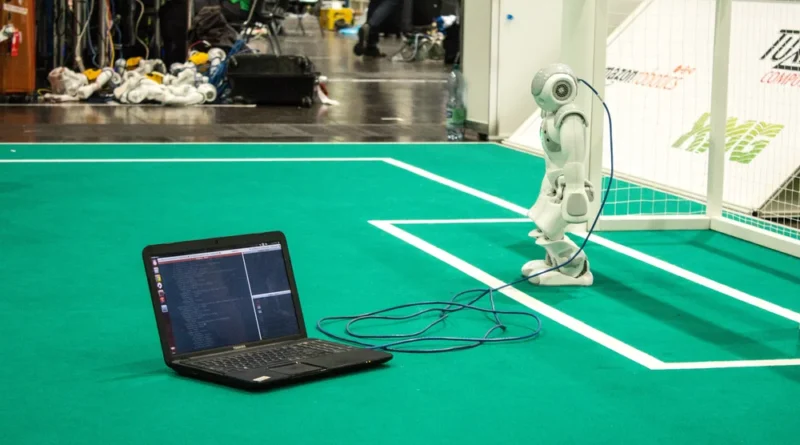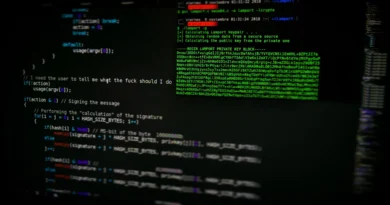What is Firmware?
In computing, firmware is the term for the software that comes pre-installed on a device or microprocessor from the manufacturer. The electronic gadget is useless if you don’t have it. Firmware, in contrast to regular software, is designed to run and maintain hardware without the need for user input.
Embedding firmware into a device is a complex process that typically necessitates specialised tools, and once it’s there, it’s usually impossible to remove or modify it without the manufacturer’s assistance. Firmware can also be referred to as “embedded software” or “embedded system” due to the fact that it is permanently installed on the hardware.
The firmware on a device is seldom updated, but when it is, there are at least two reasons to do so. These include of making enhancements to the gadget or addressing any issues that have been discovered.
Roots of Firmware or Software
Ascher Opler first used the word “firmware” in a Datamation essay published in 1967. Datamation was an American computer journal that ran from 1957 to 1998. In those days, firmware referred to the microcode contained in a tiny, specialised, high-speed memory. This microcode is responsible for defining and implementing the computer’s instruction set.
When compared to hardware and software, firmware is distinct. Unlike other forms of computer code, this one did not consist of CPU instructions (CPU). Microcode, which is far more primitive, is used to implement machine instructions. It is named “firmware” because it resides in the “firm” – the middle ground – between hardware and software.
These days, the term “firmware” can be used to describe any software that is inextricably tied to hardware, even if it’s only a set of instructions for a simple electrical device like a microwave oven, a remote control, or a computer peripheral.
Appliances With Custom Software Implanted
Below are just some of the common household objects that rely on firmware.
Computing Devices Designed for Individual Use
The firmware parts of a PC are crucial, much as the OS (OS). However, firmware can’t self-update as an OS would, so any problems that are discovered after the item ships will have to be manually addressed.
Items for the General Public
Currently, firmware updates are available for portable music players like iPods. Firmware upgrades are a common method for certain manufacturers to incorporate support for new file formats into their products (codecs). Such upgrades may also affect other aspects of the device, such as the user interface or battery life. Nowadays, nearly every mobile device can receive software updates wirelessly.
Automobiles
There have been onboard computers and sensors in most modern automobiles since 1996. Antilock braking systems (ABS) and transmission control units (TCU) were also computer-controlled by 2010. (TCUs). The firmware is what makes everything work.
Exactly how does firmware function?
The firmware of traffic lights controls when the lights should change. Without firmware, a computer would have no way to recognise hardware components like a hard drive or video card. Without inbuilt firmware, a hard drive would be completely clueless as to when to spin up and when to slow down. Without firmware, a wireless network card wouldn’t be able to connect to Wi-Fi on a certain radio frequency.
Also Read: What Is the Best Internet TV Service?
Firmware Categories
There are three distinct flavours of firmware:
Firmware at a low level
data is kept in a permanent location, like a read-only memory (ROM). The fact that it is an integral element of the hardware precludes any possibility of it being rewritten or upgraded.
Enhanced firmware
A feature of chips that use flash memory. It’s closer to software than hardware since its instructions are typically more complicated than low-level firmware.
Subsystem
A portion of a bigger system that functions almost independently. Its high-level firmware is similar to microcode and is incorporated within the device.
Examples of Firmware
As was noted up top, firmware may take on a number of different flavours depending on the type of hardware it’s installed in.
The BIOS is an example of the firmware found in personal computers. When powered on, it activates the microcontroller’s boot loader programme. In addition, it facilitates interaction between your computer’s operating system and the peripherals you have attached to it, such as your keyboard, mouse, printer, and others.
Examples of firmware include the programmes that allow devices to be turned on and off, run faster or slower, brighten or dim, open or close, and emit more or less cold or heat with the flip of a switch. Examples of firmware can be found in heart defibrillators, building light controls, vehicles, and most household appliances sold today.
When Should You Use Firmware and When Should You Use Drivers?
A driver is software that communicates with the hardware. In the case of a mouse, the “driver” instructs the device on how to function. The monitor driver of a desktop computer tells the screen how to interact with the other components (keyboard, mouse, and CPU) that came with the set after the monitor was swapped out.
Drivers make it possible for nearly all applications to function with virtually all hardware. Because of them, you may avoid the hassle of constantly updating software in order to take advantage of the latest features offered by new technology (e.g., your keyboard or mouse is broken or you purchased an additional hard drive). If the required driver is already loaded on your computer, simply plugging in the device to its appropriate port will cause it to boot up.
What Exactly Is Firmware Hacking?
Hacking firmware involves the development of unauthorised or modified firmware versions by third parties in order to add new features or unlock previously inaccessible capabilities. A firmware hack can be installed or launched by accessing the device’s firmware update function. However, others utilise vulnerabilities to run since the hardware was locked by the manufacturer to prevent it from running unlicensed software. Most firmware modifications are distributed as free software.
Can You Explain a Firmware Upgrade?
When a manufacturer releases new firmware, it’s considered an update. It’s some software that improves the gadget without changing its physical structure. The goal of such an upgrade is to increase the usability of a system by including new functions.
As time goes on, the requirement for bug patches and gadget maintenance decreases thanks to firmware updates or upgrades. They also make your machine less susceptible to hacking, since some companies choose to give firmware upgrades to address particularly serious security flaws. An illustration of this would be the replacement firmware upgrade for Dell’s previous version that was published in May 2021.




